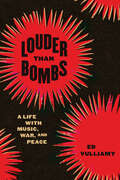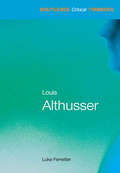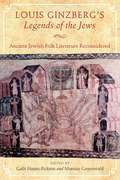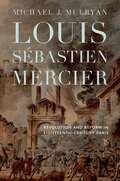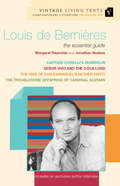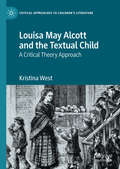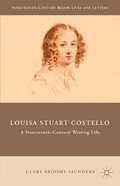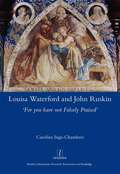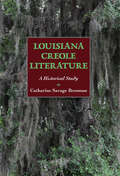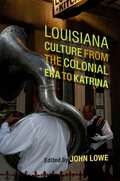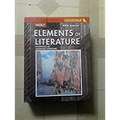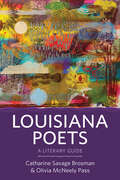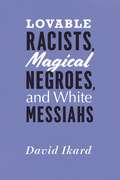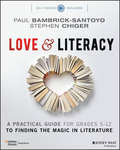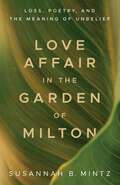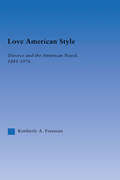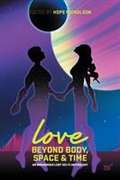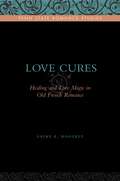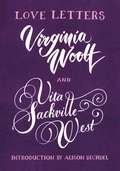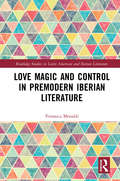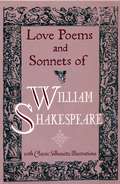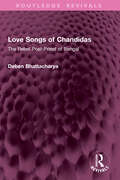- Table View
- List View
Louder Than Bombs: A Life with Music, War, and Peace
by Ed VulliamyPart memoir, part reportage, Louder Than Bombs is a story of music from the front lines. Ed Vulliamy, a decorated war correspondent and journalist, offers a testimony of his lifelong passion for music. Vulliamy’s reporting has taken him around the world to cover the Bosnian war, the fall of the Berlin Wall and collapse of Communism, the Iraq wars of 1991 and 2003 onward, narco violence in Mexico, and more, places where he confronted stories of violence, suffering, and injustice. Through it all, Vulliamy has turned to music not only as a reprieve but also as a means to understand and express the complicated emotions that follow. Describing the artists, songs, and concerts that most influenced him, Vulliamy brings together the two largest threads of his life—music and war. Louder Than Bombs covers some of the most important musical milestones of the past fifty years, from Jimi Hendrix playing “Machine Gun” at the Isle of Wight Festival in 1970 to the Bataclan in Paris under siege in 2015. Vulliamy was present for many of these historic moments, and with him as our guide, we see them afresh, along the way meeting musicians like B. B. King, Graham Nash, Patti Smith, Daniel Barenboim, Gustavo Dudamel, and Bob Dylan. Vulliamy peppers the book with short vignettes—which he dubs 7" singles—recounting some of his happiest memories from a lifetime with music. Whether he’s working as an extra in the Vienna State Opera’s production of Aida, buying blues records in Chicago, or drinking coffee with Joan Baez, music is never far from his mind. As Vulliamy discovers, when horror is unspeakable, when words seem to fail us, we can turn to music for expression and comfort, or for rage and pain. Poignant and sensitively told, Louder Than Bombs is an unforgettable record of a life bursting with music.
Louis Althusser (Routledge Critical Thinkers)
by Luke FerretterBest known for his theories of ideology and its impact on politics and culture, Louis Althusser revolutionized Marxist theory. His writing changed the face of literary and cultural studies, and continues to influence political modes of criticism such as feminism, postcolonialism and queer theory. Beginning with an introduction to the context of Marxist theory, this book goes on to explain: * how Althusser interpreted and developed Marx’s work * the political implications of reading * ideology and its significance for culture and criticism * Althusser’s aesthetic criticism of literature, theatre and art. Placing Althusser’s key ideas in the context of earlier Marxist thought, as well as tracing their development and impact, Luke Ferretter presents a wide-ranging yet accessible guide, ideal for those new to the work of this influential critical thinker.
Louis Ginzberg's Legends of the Jews: Ancient Jewish Folk Literature Reconsidered (Raphael Patai Series in Jewish Folklore and Anthropology)
by Galit Hasan-Rokem Ithamar GruenwaldAt the beginning of the twentieth century, many perceived American Jewry to be in a state of crisis as traditions of faith faced modern sensibilities. Published beginning in 1909, Rabbi and Professor Louis Ginzberg's seven-volume The Legends of the Jews appeared at this crucial time and offered a landmark synthesis of aggadah from classical Rabbinic literature and ancient folk legends from a number of cultures. It remains a hugely influential work of scholarship from a man who shaped American Conservative Judaism. In Louis Ginzberg's Legends of the Jews: Ancient Jewish Folk Literature Reconsidered, editors Galit Hasan-Rokem and Ithamar Gruenwald present a range of reflections on the Legends, inspired by two plenary sessions devoted to its centennial at the Fifteenth Congress of the World Association of Jewish Studies in August 2009. In order to provide readers with the broadest possible view of Ginzberg's colossal project and its repercussions in contemporary scholarship, the editors gathered leading scholars to address it from a variety of historical, philological, philosophical, and methodological perspectives. Contributors give special regard to the academic expertise and professional identity of the author of the Legends as a folklore scholar and include discussions on the folkloristic underpinnings of The Legends of the Jews. They also investigate, each according to her or his disciplinary framework, the uniqueness, strengths, and weakness of the project. An introduction by Rebecca Schorsch and a preface by Galit Hasan-Rokem further highlight the folk narrative aspects of the work in addition to the articles themselves. The present volume makes clear the historical and scholarly context of Ginzberg's milestone work as well as the methodological and theoretical issues that emerge from studying it and other forms of aggadic literature. Scholars of Jewish folklore as well as of Talmudic-Midrashic literature will find this volume to be invaluable reading.
Louis Sébastien Mercier: Revolution and Reform in Eighteenth-Century Paris (Transits: Literature, Thought & Culture, 1650-1850)
by Michael J. MulryanFrench playwright, novelist, activist, and journalist Louis Sébastien Mercier (1740–1814) passionately captured scenes of social injustice in pre-Revolutionary Paris in his prolific oeuvre but today remains an understudied writer. In this penetrating study—the first in English devoted to Mercier in decades—Michael Mulryan explores his unpublished writings and urban chronicles, Tableau de Paris (1781–88) and Le Nouveau Paris (1798), in which he identified the city as a microcosm of national societal problems, detailed the conditions of the laboring poor, encouraged educational reform, and confronted universal social ills. Mercier’s rich writings speak powerfully to the sociopolitical problems that continue to afflict us as political leaders manipulate public debate and encourage absolutist thinking, deepening social divides. An outcast for his polemical views during his lifetime, Mercier has been called the founder of modern urban discourse, and his work a precursor to investigative journalism. This sensitive study returns him to his rightful place among Enlightenment thinkers.
Louis de Bernières: The Essential Guide (Vintage Living Texts #7)
by Margaret Reynolds Jonathan NoakesIn Vintage Living Texts teachers and students will find the essential guide to the works of Louis de Bernières. Vintage Living Texts is unique in that it offers an in-depth interview with Louis de Bernières, relating specifically to the texts under discussion.This guide will deal with de Bernières' themes, genre and narrative technique, and a close reading of the texts will be accompanied with likely exam questions, and contexts and comparisons - as well as providing a rich source of ideas for intelligent and inventive ways of approaching the novels.Also included in this guide are detailed reading plans for all four novels, questions for essays and discussion, contextual material, suggested texts for complimentary and comparative reading, extracts from reviews, a biography, a bibliography and a glossary of literary terms.
Louisa May Alcott and the Textual Child: A Critical Theory Approach (Critical Approaches to Children's Literature)
by Kristina WestThis book examines constructions of childhood in the works of Louisa May Alcott. While Little Women continues to gain popular and critical attention, Alcott’s wider works for children have largely been consigned to history. This book therefore investigates Alcott’s lesser-known children’s texts to reconsider critical assumptions about childhood in her works and in literature more widely. Kristina West investigates the trend towards reading Alcott’s life into her works; readings of gender and sexuality, race, disability, and class; the sentimental domestic; portrayals of Transcendentalism and American education; and adaptations of these works. Analyzing Alcott as a writer for twenty-first-century children, West considers Alcott’s place in the children’s canon and how new media and fan fiction impact readings of her works today.
Louisa Stuart Costello
by Clare Broome SaundersLouisa Stuart Costello (1799-1870) was a popular and critically acclaimed poet, novelist, travel writer, historian, biographer, artist, and medieval scholar, whose long life spanned the nineteenth century. Her wide ranging choice of genre demonstrates her skill as a writer and artist, and her acute understanding of contemporary reading trends and publishing markets. Exploring how Costello writes, what she writes, and when she writes it, provides a rich source of information about literary history, and the career of a professional woman writer in the nineteenth century. Louisa Stuart Costello: A Nineteenth-century Writing Life provides a wealth of extracts from her diverse writings, with reader responses from critics and peers, examples of her illustrations, and literary and historical contexts.
Louisa Waterford and John Ruskin: 'For You Have Not Falsely Praised'
by Caroline Ings-ChambersLouisa Waterford (1818-91), modest, retiring, of good family, renowned for her beauty, and with extraordinary grace, was the embodiment of a Victorian ideal of womanhood. But like the age itself, her life was filled with contrasts and paradoxes. She had been born with artistic gifts, and became a satellite of the Pre-Raphaelite Brotherhood, though she had no formal training. Then, at the height of John Ruskin's intellectual power and success as a critic, she asked him to accept her as an art student, and he accepted. Their correspondence- often harshly critical, never, as Waterford put it, falsely praising - lies at the heart of this book. These are letters which open a spectrum of discussion on the cultural, gender and social issues of the period. Both Waterford and Ruskin engaged in tireless philanthropic work for diverse causes, crossing social boundaries with subtle determination, and both responded to a sense of duty as well as an artistic vocation. But, as Ings-Chambers shows, their correspondence was more than a dialogue about society: it helped to make Waterford the artist she became.
Louisiana Creole Literature: A Historical Study
by Catharine Savage BrosmanLouisiana Creole Literature is a broad-ranging critical reading of belles lettres—in both French and English—connected to and generally produced by the distinctive Louisiana Creole peoples, chiefly in the southeastern part of the state. The book covers primarily the nineteenth and twentieth centuries, the flourishing period during which the term Creole had broad and contested cultural reference in Louisiana. The study consists in part of literary history and biography. When available and appropriate, each discussion—arranged chronologically—provides pertinent personal information on authors, as well as publishing facts. Readers will find also summaries and evaluation of key texts, some virtually unknown, others of difficult access. Brosman illuminates the biographies and works of Kate Chopin, Lafcadio Hearn, George Washington Cable, Grace King, and Adolphe Duhart, among others. In addition, she challenges views that appear to be skewed regarding canon formation. The book places emphasis on poetry and fiction, reaching from early nineteenth-century writing through the twentieth century to selected works by poets still writing in the early twenty-first century. A few plays are treated also, especially by Victor Séjour. Louisiana Creole Literature examines at length the writings of important Francophone figures, and certain Anglophone novelists likewise receive extended treatment. Since much of nineteenth-century Louisiana literature was transnational, the book considers Creole-based works which appeared in Paris as well as those published locally.
Louisiana Culture from the Colonial Era to Katrina (Southern Literary Studies)
by John LoweIn 1803, President Thomas Jefferson acquired 828,000 square miles of French territory in what became known as the Louisiana Purchase. Although today Louisiana makes up only a small portion of this immense territory, this exceptional state embraces a larger-than-life history and a cultural blend unlike any other in the nation. Louisiana Culture from the Colonial Era to Katrina, a collection of fourteen essays compiled and edited by John Lowe, captures all of the flavor and richness of the state's heritage, illuminating how Louisiana, despite its differences from the rest of the United States, is a microcosm of key national concerns -- including regionalism, race, politics, immigration, global connections, folklore, musical traditions, ethnicity, and hybridity. Divided into five parts, the volume opens with an examination of Louisiana's origins, with pieces on Native Americans, French and German explorers, and slavery. Two very different but complementary essays follow with investigations into the ongoing attempts to define Creoles and creolization. No collection on Louisiana would be complete without attention to its remarkable literary traditions, and several contributors offer tantalizing readings of some of the Pelican State's most distinguished writers -- a dazzling array of artists any state would be proud to claim. The volume also includes pieces on a couple of eccentric mythologies distinct to Louisiana and explorations of Louisiana's unique musical heritage.Throughout, the international slate of contributors explores the idea of place, particularly the concept of Louisiana as the center of the Caribbean wheel, where Cajuns, Creoles, Cubans, Haitians, Jamaicans, and others are part of a New World configuration, connected by their linguistic identity, landscape and climate, religion, and French and Spanish heritage. A poignant conclusion considers the devastating impact of Hurricanes Katrina and Rita and what the storms mean for Louisiana's cultural future. A rich portrait of Louisiana culture, this volume stands as a reminder of why that culture must be preserved.
Louisiana Holt Elements of Literature: Fifth Course, Essentials of American Literature
by Al Desmarais Cynthia A. Arceneaux Julie M. T. ChanNIMAC-sourced textbook
Louisiana McDougal Littell Literature [Grade 10]
by Arthur N. Applebee Jim Burke Douglas Carnine Yvette Jackson Judith A. Langer Robert J. Marzano Mary Lou Mccloskey Donna M. Ogle Carol Booth Olson Lydia Stack Carol Ann Tomlinson Robert T. Jiménez Janet Allen et al.NIMAC-sourced textbook
Louisiana Poets: A Literary Guide
by Catharine Savage Brosman Olivia McNeely PassLouisiana has long been recognized for its production of talented writers, and its poets in particular have shined. From the early poetry of the state to the work crafted in the present day, Louisiana has nurtured and exported a rich and diverse poetic tradition. In Louisiana Poets: A Literary Guide authors Catharine Savage Brosman and Olivia McNeely Pass assess the achievements of Louisiana poets from the past hundred years who, Brosman and Pass assert, deserve both public notice and careful critical examination.Louisiana Poets presents the careers and works of writers whose verse is closely connected to the peoples, history, and landscapes of Louisiana or whose upbringing or artistic development occurred in the state. Brosman and Pass chose poets based on the scope, abundance, and excellence of their work; their critical reception; and the local and national standing of the writer and work. The book treats a wide range of forty poets—from national bestsellers to local celebrities—detailing their histories and output.Intended to be of broad interest and easy to consult, Louisiana Poets showcases the corpus of Louisiana poetry alongside its current profile. Brosman and Pass have created a guide that provides a way for readers to discover, savor, and celebrate poets who have been inspired in and by the Pelican State.
Louisiana Reading Street [Grade 6]
by Candy Dawson Boyd Sharon Vaughn Camille Blachowicz Wendy Cheyney Connie Juel Edward Kame'Enui Donald Leu Jeanne Paratore Sam Sebesta Deborah Simmons Susan Watts-Taffe Karen Kring Wixson Peter Afflerbach P. David PearsonNIMAC-sourced textbook
Lovable Racists, Magical Negroes, and White Messiahs
by T. Denean Sharpley-Whiting David IkardIn this incredibly timely book, David Ikard dismantles popular white supremacist tropes, which effectively devalue black life and trivialize black oppression. Lovable Racists, Magical Negroes, and White Messiahs investigates the tenacity and cultural capital of white redemption narratives in literature and popular media from Uncle Tom’s Cabin to The Help. In the book, Ikard explodes the fiction of a postracial society while awakening us to the sobering reality that we must continue to fight for racial equality or risk losing the hard-fought gains of the Civil Rights movement. Through his close reading of novels, films, journalism, and political campaigns, he analyzes willful white blindness and attendant master narratives of white redemption—arguing powerfully that he who controls the master narrative controls the perception of reality. The book sounds the alarm about seemingly innocuous tropes of white redemption that abound in our society and generate the notion that blacks are perpetually indebted to whites for liberating, civilizing, and enlightening them. In Lovable Racists, Magical Negroes, and White Messiahs, Ikard expertly and unflinchingly gives us a necessary critical historical intervention.
Love & Literacy: A Practical Guide to Finding the Magic in Literature (Grades 5-12)
by Paul Bambrick-Santoyo Stephen ChigerWhen our students enter middle and high school, the saying goes that they stop learning to read and start reading to learn. Then why is literacy still a struggle for so many of our students? The reality is that elementary school isn’t designed to prepare students for Othello and Song of Solomon: so what do we do? Love and Literacy steps into the classrooms of extraordinary teachers who have guided students to the highest levels of literacy. There is magic in their teaching, but that magic is replicable. It starts with a simple premise: kids fall in love with texts when they understand them, and that understanding comes from the right knowledge and/or the right strategy at the right time. Love and Literacy dissects the moves of successful teachers and schools and leaves you with the tools to make these your own: Research-based best practices in facilitating discourse, building curriculum, guiding student comprehension and analysis, creating a class culture where literacy thrives, and more Video clips of middle and high school teachers implementing these practices An online, print-ready Reading and Writing Handbook that places every tool at your fingertips to implement effectively Discussion questions for your own professional learning or book study group Great reading is more than just liking books: it’s having the knowledge, skill, and desire to experience any text in all its fullness. Love and Literacy guides you to create environments where students can build the will and wherewithal to truly fall in love with literacy.
Love & Loss: Stories of the Heart
by Georgina HammickLove and Loss brings together 21 bittersweet stories by some of the foremost women writers of this century exploring the loss of love.
Love Affair in the Garden of Milton: Loss, Poetry, and the Meaning of Unbelief
by Susannah B. MintzLove Affair in the Garden of Milton interweaves the private story of a marriage coming apart with readings of John Milton’s poetry and prose. Connected essays chart the chaos of loss and the discovery of how a writer can inhabit our emotional as well as our intellectual selves. Inflected by the principles of mindfulness, Susannah B. Mintz’s memoir explores how we reconstruct ourselves and find our way back to meaning in the aftermath of trauma.Formally inventive and engaging dynamic philosophical ideas, Love Affair in the Garden of Milton raises questions of forgiveness, desire, identity, grief, and the counterintuitive relevance of literary tradition. This lyric memoir offers readers a sense of partnership, with the author and Milton as companionable guides through the wilds of love and loss.
Love American Style: Divorce and the American Novel, 1881-1976 (Literary Criticism and Cultural Theory)
by Kimberly FreemanA popular subject in sociology and cultural studies, divorce has until recently been overlooked by literary critics. Spanning nearly a century during which the divorce rate skyrocketed, Love American Style traces the treatment of divorce in the American novel. This book draws upon popular, sociological, political and architectural history to illustrate how divorce reflects conflicting ideologies and notions of American identity. Focusing primarily on work by William Dean Howells, Edith Wharton, Mary McCarthy and John Updike, Kimberly Freeman delineates a system of tropes particular to divorce in American novels, such as the association of divorce with the West and modernity, the dismantling of the home, and the disruption of the boundary between the public and the private. These tropes suggest a literary tradition of love, marriage and divorce that is central to twentieth century American fiction. Offering an explanation for both the treatment of divorce in the American novel as well as its predominance in American culture, this book should appeal to scholars of American literature and popular culture, or anyone interested in how divorce has become so 'American'.
Love Beyond Body, Space, And Time: An Indigenous LGBT Sci-Fi Anthology
by David Robertson Hope Nicholson Cherie Dimaline Gwen Benaway Richard Camp Jeffrey Veregge Nathan Adler Daniel Justice Cleo Keahna Mari Kurisato Darcie BadgerPuppies in space! Cyborg escapes! Rockabilly girls with spider-magic! Benevolent aliens! <p><p> Love Beyond Body, Space, and Time is a collection of Indigenous science fiction and urban fantasy focusing on LGBT and Two-Spirit characters. These stories range from a transgender woman undergoing an experimental transition process to young lovers separated through decades and meeting in their own far future. These are stories of machines and magic, love and self-love. <p> Featuring Governor General award-winning authors David Alexander Robertson and Cherie Dimaline.
Love Cures: Healing and Love Magic in Old French Romance (Penn State Romance Studies)
by Laine E. DoggettWhat is love? Popular culture bombards us with notions of the intoxicating capacities of love or of beguiling women who can bewitch or heal—to the point that it is easy to believe that such images are timeless and universal. Not so, argues Laine Doggett in Love Cures. Aspects of love that are expressed in popular music—such as “love is a drug,” “sexual healing,” and “love potion number nine”—trace deep roots to Old French romance of the high Middle Ages. A young woman heals a poisoned knight. A mother prepares a love potion for a daughter who will marry a stranger in a faraway land. How can readers interpret such events? In contrast to scholars who have dismissed these women as fantasy figures or labeled them “witches,” Doggett looks at them in the light of medical and magical practices of the high Middle Ages. Love Cures argues that these practitioners, as represented in romance, have shaped modern notions of love. Love Cures seeks to engage scholars of love, marriage, and magic in disciplines as diverse as literature, history, anthropology, and philosophy.
Love Letters: Vita and Virginia
by Virginia Woolf Vita Sackville-WestDelve into a legendary literary love affair'I am reduced to a thing that wants Virginia. I composed a beautiful letter to you in the sleepless nightmare hours of the night, and it has all gone. I just miss you...'At a dinner party in 1922, Virginia Woolf met the renowned author, aristocrat - and sapphist - Vita Sackville-West. Virginia wrote in her diary that she didn't think much of Vita's conversation, but she did think very highly of her legs. It was to be the start of almost twenty years of flirtation, friendship, and literary collaboration. Their correspondence ended only with Virginia's death in 1941.Intimate and playful, these selected letters and diary entries allow us to hear these women's constantly changing feelings for each other in their own words. Eavesdrop on the affair that inspired Virginia to write her most fantastical novel, Orlando, and discover a relationship that - even a hundred years later - feels radical and relatable.WITH A NEW INTRODUCTION FROM ALISON BECHDEL, AUTHOR OF FUN HOME AND CREATOR OF THE BECHDEL TEST.
Love Magic and Control in Premodern Iberian Literature (Routledge Studies in Latin American and Iberian Literature)
by Veronica MenaldiThis book explores the complexity of Iberian identity and multicultural/multi-religious interactions in the Peninsula through the lens of spells, talismans, and imaginative fiction in medieval and early modern Iberia. Focusing particularly on love magic—which manipulates objects, celestial spheres, and demonic conjurings to facilitate sexual encounters—Menaldi examines how practitioners and victims of such magic as represented in major works produced in Castile. Magic, and love magic in particular, is an exchange of knowledge, a claim to power and a deviation from or subversion of the licit practices permitted by authoritative decrees. As such, magic serves as a metaphorical tool for understanding the complex relationships of the Christian with the non-Christian. In seeking to understand and incorporate hidden secrets that presumably reveal how one can manipulate their environment, occult knowledge became one of the funnels through which cultures and practices mixed and adapted throughout the centuries.
Love Poems & Sonnets of William Shakespeare: Super Large Print Edition Of The Classic Love Poems Specially Designed For Low Vision Readers With A Giant Easy To Read Font
by William ShakespeareThe greatest sonnets ever written, by the greatest poet and playwright in the English language--now in a handsome edition featuring exquisite color illustrations.
Love Songs of Chandidas: The Rebel Poet-Priest of Bengal (Routledge Revivals)
by Deben BhattacharyaFirst published in 1967, Love Songs of Chandidās provides an informative introduction which makes vividly clear the importance of Chandidās to the Indian peasant masses. As the author tells us, the traveller through the Birbhum area of Bengal hears Chandidās everywhere, in the villages, in the fields, on the roads. Night after night, the people gather in the temple courtyards or on the village greens to listen to professional ‘Kirtan’ singers sing his songs of the divine love of Radha and Krishna. The influence of Chandidās on contemporary Bengali literature is equally important, his songs having enriched the work of great poets such as Rabindranath Tagore, Govindadas, and many others. The author also discusses the interesting topic of the Sahaja (‘spontaneity’) movement in Indian faith and literature, as manifested in the songs of Chandidās, and the worship of love-making, divine and human, as an important aspect of this faith. This book will be of interest to students of literature, music, history, cultural studies and South Asian studies.
